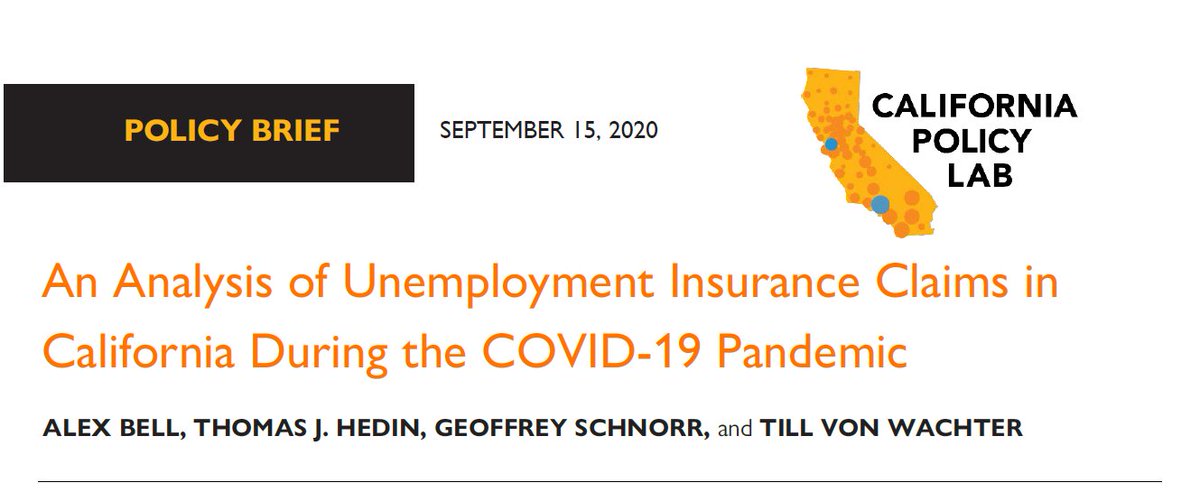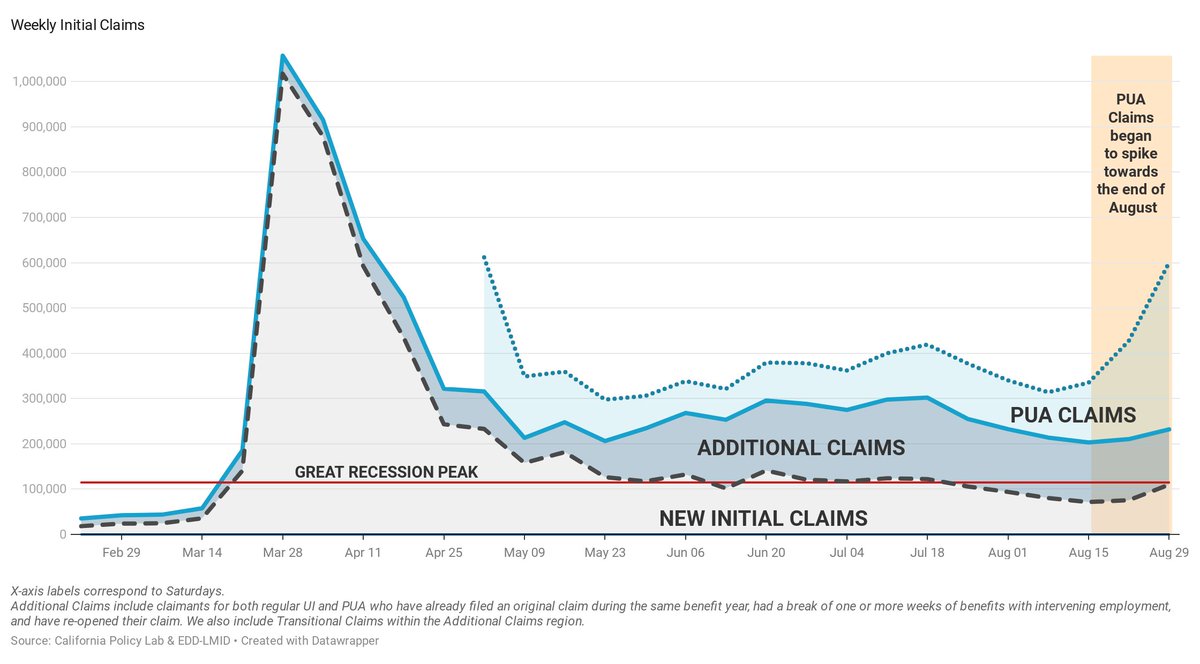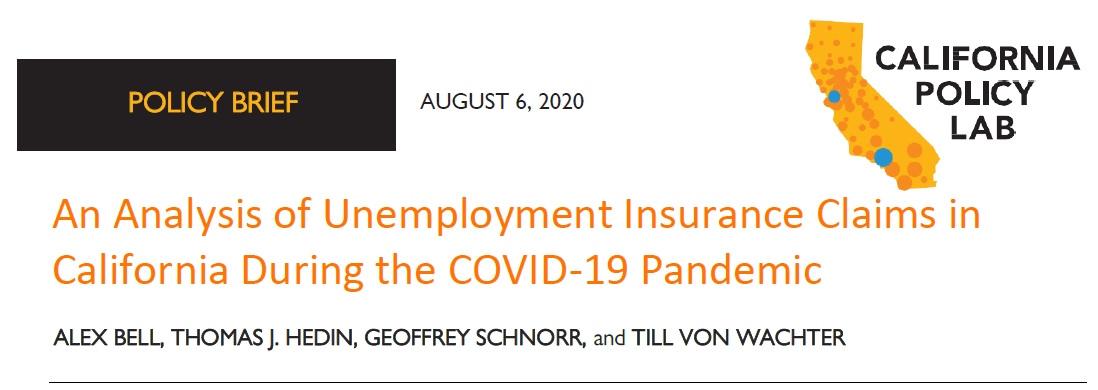How to get URL link on X (Twitter) App

 In order to understand what's going on, you need to understand that there are actually 2 types of initial claims for UI:
In order to understand what's going on, you need to understand that there are actually 2 types of initial claims for UI:
 Of the 2 million UI Claimants in CA who were laid off in 2020q2 & experienced a "full separation" from their employers, (i.e., they weren't just working reduced hours), nearly 40% remained totally unemployed (registering $0 in earnings) for the rest of the year.
Of the 2 million UI Claimants in CA who were laid off in 2020q2 & experienced a "full separation" from their employers, (i.e., they weren't just working reduced hours), nearly 40% remained totally unemployed (registering $0 in earnings) for the rest of the year. 

 1) As the crisis dragged on, Benefit extension programs such as PEUC and FED-ED (aka EB) have become increasingly important in supporting unemployed workers.
1) As the crisis dragged on, Benefit extension programs such as PEUC and FED-ED (aka EB) have become increasingly important in supporting unemployed workers.

 We want to know who is “missing out” on UI.
We want to know who is “missing out” on UI.
 In late August, initial claims for PUA skyrocketed, while EDD expressed concerns of a surge in fraudulent PUA claims. There was also a slight increase in initial claims for regular UI.
In late August, initial claims for PUA skyrocketed, while EDD expressed concerns of a surge in fraudulent PUA claims. There was also a slight increase in initial claims for regular UI.

 The recent growth in Initial Claims has largely been driven by an increasing number of additional claims —claims which are reopened after a claimant’s temporary return to work.
The recent growth in Initial Claims has largely been driven by an increasing number of additional claims —claims which are reopened after a claimant’s temporary return to work. 
